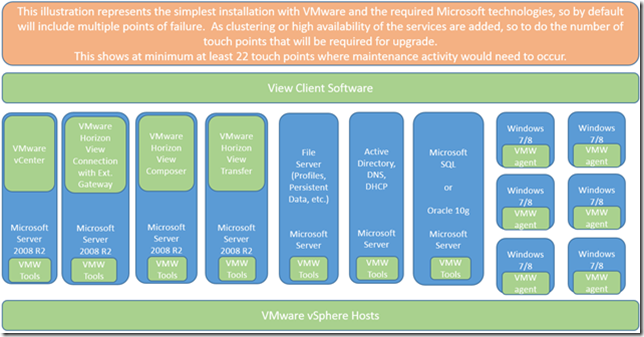VMware or Microsoft – VDI–A Look at Supportability and More!
Tommy Patterson delivers the next post in our VMware OR Microsoft Series – Here is an excerpt….
VMware jumped in the VDI ring many years ago mainly through some acquisitions, and for the first few years struggled to gain momentum against Citrix. After all Citrix owned this market for many years almost solo. Citrix had the client connectivity piece so well-honed that it was quite difficult for any other vendor to compete in the space. VMware’s answer to this was to license the PCoIP protocol from Teradici. And so for the past few years, VMware has continued to take some market share from Citrix on the VDI front. Which brings us to the present.
Enter Microsoft Server 2012 Remote Desktop Services(RDS). Most of us think of RDS as simply the traditional terminal server computing method whereby one server installation shares out many desktop or application sessions to the end users. Most companies are still using this traditional type of application presentation as the majority of their virtual desktop offering. The reason? ROI is much easier to show for terminal sessions than it is for individual virtual machines. An important note to make here, Microsoft provided the server operating system to make this commonplace method possible from the very beginning. So when Server 2012 hit the street, Microsoft delivered a much more comprehensive offering to not only embolden those pieces that have performed so well but also to bring virtual desktop infrastructure(VDI) computing to a more appeasing level in performance, user-friendliness, and last but not least, cost. From the client connectivity protocol(RDP) to the ability to deploy virtual desktops or traditional terminal services via a simple wizard built into the newly re-imagined Server Manager, Server 2012 now plays a much simpler choice in the VDI space.
Read the full article here -
VMware or Microsoft Series – VDI – A Look at Supportability and More!
-Cheers!
